GCC strives to reach real estate potential
27 June 2024

The real estate sector across the six states that make up the GCC has not yet achieved its full potential when it comes to attracting foreign investment.
This is best illustrated by the region’s largest economy, Saudi Arabia. The kingdom’s Vision 2030 economic diversification strategy includes ambitious targets to increase homeownership among citizens and attract international investors with its recently introduced Premium Residency Visa. The new visa is designed to open up the market to global investors, and while some gains are starting to be made, the market is still at the start of this journey.
Throughout the GCC, real estate markets have demonstrated a degree of resilience and stability following the Covid-19 pandemic, but challenges remain.
Rising borrowing costs and slow-paced reforms have affected the residential sector in the region, although the impact has not been universal. In Kuwait and Saudi Arabia, real estate sales have declined significantly, whereas in Dubai, sales continue apace.
For commercial real estate, the demand for high-quality, sustainable office spaces is a common trend. Businesses are increasingly favouring high-quality Grade A properties, leading to higher rental rates compared to mid- and low-end offices.
The retail sector has benefited from increased consumer activity, particularly during festive seasons. Malls and mixed-use developments have maintained stable rental rates, although some areas, like strip retail rentals, have seen slight declines. This reflects a broader trend of consumer preferences shifting towards more integrated and experiential shopping environments with a keen focus on entertainment.
Meanwhile, the industrial sector has shown robust demand, driven by manufacturing and logistics. High occupancy rates for large and medium-sized warehouses underline the sector’s resilience.
Bahrain
Bahrain’s property market is performing steadily, driven by strategic homebuyers focusing on mid-range properties, as well as a growing demand for luxury waterfront homes.
The market’s attractiveness has been enhanced by masterplanned developments such as Bahrain Bay and Diyar Al-Muharraq, which have achieved a critical mass that means they are now perceived as thriving communities rather than ongoing construction projects.
While project completions are important for confidence, in its Q1 2024 market report, property consultant Savills warns that key project completions such as Onyx Residences, Al-Nasseem Phase 2 Villas and Wadi Al-Riffa could lead to a short-term dip in capital values due to oversupply.
Any possible fall could reverse recent gains. According to Savills, high-end apartment units registered modest 0.3% quarterly growth, averaging BD832 ($2,207.6) a square metre (sq m), while high-end villas have experienced a 4.5% year-on-year decline, averaging BD583/sq m.
Savills reports that the office sector has remained stable, with businesses favouring high-quality Grade A properties, leading to higher rental rates compared to mid- and low-end offices. Demand for Leed-certified spaces and co-working environments is increasing, reflecting environmental, social and governance (ESG) commitments. Grade A properties face mild value corrections due to new developments.
Retail benefited from festive mall footfalls, keeping rental rates stable for malls and mixed-use developments, while strip retail rentals dropped slightly.
Kuwait
The Kuwait real estate sector continued its dismal performance in 2023 due to rising borrowing costs and the slow pace of ongoing reforms. The volume of transactions saw a significant downturn, according to a report by Marmore, a fully owned research subsidiary of Kuwait Financial Centre, Markaz.
Real estate sales dropped to KD2.1bn ($6.7bn) in the first nine months of 2023, reflecting a 26% year-on-year decline from KD2.8bn ($9.1bn). This downturn has affected all segments of the market.
In the residential sector, sales fell by 26% in Q3 2023, totalling KD1.1bn ($3.6bn), down from KD1.4bn ($4.7bn) in the same period of the previous year. The number of transactions also declined by 34% year-on-year. High house prices and borrowing costs have kept demand muted.
The residential rental segment also decreased by 20% year-on-year, reaching KD666m ($2.2bn) in Q3 2023, down from KD831m ($2.7bn) in Q3 2022.
The commercial sector experienced a 37% year-on-year drop in sales, to KD321m ($1bn) in 2023, compared to KD511m ($1.6bn) in 2022. The number of transactions in this sector declined by 35% year-on-year.
In July last year, Kuwait’s National Assembly approved the Housing Development Law and amendments to the Housing and Real Estate Affairs Law that enables private sector involvement – including foreign investment – in developing cities and residential areas, and aims to prevent land monopolies. These measures could positively influence the country’s real estate market this year.
Oman
After a couple of tough years during and immediately following the Covid-19 pandemic, Oman is again capitalising on its real estate potential, with new projects attracting interest from residents and investors.
The sultanate’s real estate market in 2024 is buoyed by a combination of increasing expatriate populations, attractive pricing and favourable government policies.
A recent report by property consultancy Cavendish Maxwell highlights the contribution of the government’s strategic reforms and investments in infrastructure as critical drivers for the growth of the real estate sector in the country. These have included the easing of foreign ownership restrictions, the introduction of new real estate laws and enhanced regulatory frameworks that have created a more transparent and attractive market for investors.
Longer term, Muscat has set targets for the economy that will support the real estate sector. Under Oman’s Vision 2040 plan, the government aims to attract 11 million visitors annually by 2040, which will boost the tourism industry. Investments in economic zones, renewable energy, manufacturing and tourism projects will contribute to the growth of the construction industry, including the real estate sector.
Oman is developing new projects in response to the long-term opportunities that this growth will create. These include the Sultan Haitham City project to the west of Muscat and a masterplanned mountain development on Jebel Akhdar, launched earlier this year.
Qatar
Following a period of fluctuation around the 2022 Fifa World Cup, Qatar’s real estate market is showing signs of stability, according to Cushman & Wakefield. The number of real estate sales transactions surged by 17.3% in January and February this year compared to the same period in 2023, with an overall value increase of 4.1%.
The declining trend in residential sales transactions seen in 2023, when a drop of 16.2% was recorded compared to 2022, has been reversed in the first two months of this year. Residential sales transactions have increased by 30% compared to the same period last year, reflecting a significant 46% rise in transaction value.
In the rental segment, the early months of 2024 have highlighted a growing disparity between newly constructed residential projects and those built over a decade ago. Tenants are increasingly drawn to modern, well-managed serviced appartments.
Office leasing activity declined in the first quarter of 2024, following a good run at the end of 2023. Over the past six months, more than 70,000 sq m of Grade A office space has been reserved, leading to a decrease in availability in areas including Lusail and Msheireb.
In the first quarter of 2024, hotel room supply in Qatar reached 38,000, which marks a 45% increase in supply over the past five years.
Despite initial concerns of oversupply, Qatar’s hotel industry has experienced a significant boost due to a rise in tourist arrivals since January. Hotel occupancy rates also soared to 84% in January and 85% in February, reaching their highest levels since 2015.
Saudi Arabia
Saudi Arabia’s real estate sector is moving into a new phase as it aims to build on its recent successes and targets foreign investment more proactively.
Real estate forms a key part of the kingdom’s Vision 2030, which aims to increase homeownership by Saudi nationals to 70% by 2030, from 63.7% in 2023.
The residential real estate market in Saudi Arabia is experiencing robust demand, especially in the major cities of Riyadh, Jeddah and Dammam. In Q1 2024, Riyadh recorded a 77% year-on-year increase in sales transactions, while Jeddah saw a 92.9% rise. This surge in activity underscores the strong appetite for residential properties in these urban centres.
Despite this growth, the market faces challenges such as affordability and a shortage of appropriately priced homes.
Historically, foreign ownership restrictions have limited international investment in Saudi real estate. However, the new visa scheme signifies a pivotal shift, encouraging a diverse pool of global talents and investors to contribute to the local economy. This move is expected to drive up property values in premium segments and spur the development of luxury real estate projects.
“The real estate market in Saudi Arabia has long anticipated a change in the foreign ownership rules. A significant milestone was reached at the start of the year when a raft of new Premium Residency Visa options were unveiled, including a real estate ownership-linked visa, which is likely to pave the way for international buyers and investors,” says real estate consultancy Knight Frank in its recent Destination Saudi Report.
This move is expected to create supplemental demand from foreign investors that have been waiting for changes in the kingdom’s ownership laws.
Saudi Arabia’s new Premium Residency Visas include a real estate ownership-linked option that is designed to attract foreign investment by allowing non-Saudis to own property worth at least SR4m ($1.1m).
This policy shift marks a strategic opening up of the market to international investors and affluent expatriates and could potentially boost high-value transactions and increase the demand for luxury residential properties in the kingdom.
One of the early focus areas for new investment inflows could be the holy cities of Mecca and Medina.
The demand for real estate in Saudi Arabia is also being driven by high-net-worth individuals (HNWI), particularly those from Muslim-majority countries. Surveys indicate that 82% of international HNWI buyers are keen to own real estate in the kingdom, with significant interest in the two holy cities.
These buyers view Saudi Arabia as a good investment opportunity, with cultural and religious reasons also playing a crucial role in their decision-making, Knight Frank says in its Destination Saudi report.
UAE
The UAE’s real estate market started 2024 on a robust note, showing increased activity levels across all sectors during the first quarter, according to the latest report by property consultant CBRE.
The report shows that the total transaction volumes in Dubai’s residential market reached 35,310 in Q1 2024. This is the highest total ever recorded in the first quarter of the year, marking an increase of 20.5% from the previous year.
Off-plan transactions in Dubai also increased by 23.9%, whereas secondary market transactions rose by 15.2% during the same period.
The CBRE report also outlined that in the first quarter of 2024, Dubai’s residential market witnessed an increase in average prices of 20.7% by March 2024 compared to the previous year.
In Abu Dhabi, average apartment prices rose by 4.3% and villa prices saw an increase of 2.3% during the same period.
In the commercial sector, the total number of rental registrations in the office sector increased to 46,850, a hike of 35.8% compared to the previous year, according to data from Dubai Land Department.
In Abu Dhabi, an increased activity level in the commercial space sector has taken the occupancy rate to 94% in the first quarter of 2024, up from the 92.5% registered in the same period last year. The increased occupancy levels have led to a growth in rentals, where Prime, Grade A and Grade B rents posted average growth rates of 6.6%, 3.4% and 9.7%, respectively.
The hospitality sector also noted improvement. The number of international visitors to Dubai totalled 5.2 million in the period from January to March 2024, up by 10.2% from a year earlier. The total number of hotel guests in Abu Dhabi stood at 1.3 million, a growth of 22% compared to Q1 2023.
In the retail sector, leasing activity lagged in Abu Dhabi as 7,779 rental contracts were registered in the first quarter of 2024, marking a decline of 8.1% compared to Q1 2023. Dubai witnessed a marginal increase of 0.2% in retail registrations compared to same period last year, recording a total of 23,139.
Finally, the UAE’s industrial and logistics sector also recorded positive leasing activity, with the total number of rental registrations in Abu Dhabi and Dubai increasing by 4.7% and 3.2%, respectively, compared to the same period last year.
Additional reporting by Yasir Iqbal
Exclusive from Meed
-
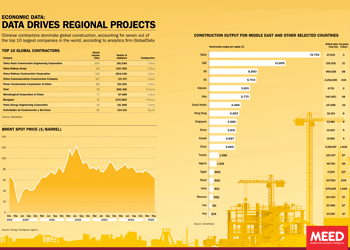 June 2025: Data drives regional projects
June 2025: Data drives regional projects30 June 2025
-
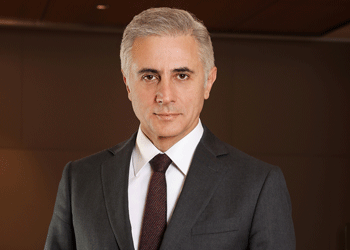 UAE-Turkiye financial links strengthen
UAE-Turkiye financial links strengthen30 June 2025
-
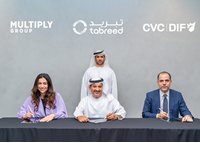
-
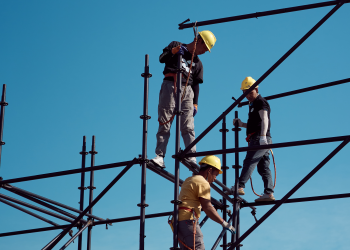 Iraq approves Basra housing project
Iraq approves Basra housing project30 June 2025
-
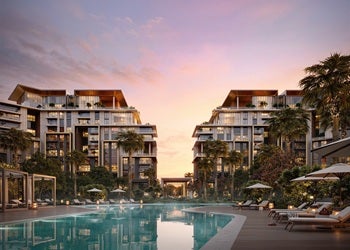 Meraas announces Dubai City Walk expansion
Meraas announces Dubai City Walk expansion30 June 2025
All of this is only 1% of what MEED.com has to offer
Subscribe now and unlock all the 153,671 articles on MEED.com
- All the latest news, data, and market intelligence across MENA at your fingerprints
- First-hand updates and inside information on projects, clients and competitors that matter to you
- 20 years' archive of information, data, and news for you to access at your convenience
- Strategize to succeed and minimise risks with timely analysis of current and future market trends

Related Articles
-
 June 2025: Data drives regional projects
June 2025: Data drives regional projects30 June 2025
Click here to download the PDF
Includes: Top 10 Global Contractors | Brent Spot Price | Construction output
To see previous issues of MEED Business Review, please click herehttps://image.digitalinsightresearch.in/uploads/NewsArticle/14171168/main.gif -
 UAE-Turkiye financial links strengthen
UAE-Turkiye financial links strengthen30 June 2025
 This package on UAE-Turkiye relations also includes:
This package on UAE-Turkiye relations also includes:> UAE-Turkiye trade gains momentum
> Turkiye’s Kalyon goes global

Turkish bank DenizBank is one of Turkiye’s leading private banks and, as a wholly owned subsidiary of Emirates NBD since 2019, it is playing a leading role in developing business links between the UAE and Turkiye.
Recep Bastug, who was appointed as DenizBank’s CEO in 2024, says there is great potential for trade between the two countries.
“Turkiye is a growing country,” he says. “We’ve had volatility over the past five years, but the Turkiye economy and the banking sector have been able to manage those periods successfully.”
Having spent years with international institutions such as BBVA, Bastug has vast experience in the banking sector. “Turkish banks, especially private ones like DenizBank, are very successful. In terms of capital, balance sheet structure and digital transformation, we are in a strong position,” he says.
 Solid fundamentals
Solid fundamentalsTurkiye’s fundamentals remain solid with a diversified export-oriented economy, a young and skilled population of 85 million, and relatively low debt levels. “We are not a highly leveraged country. Our household debt-to-GDP ratio is low. With the right policy mix, we offer high potential for foreign investors,” says Bastug.
That potential is increasingly being realised through growing engagement with the GCC and the UAE. “Turkiye’s connection with the Gulf is going up, and DenizBank is set to play a serious role in these relations. Day by day, Turkish companies are expanding their footprint in the region.”
GCC projects
Baştug says that many of these companies approach DenizBank to help facilitate their entry into Gulf markets. “Some of our clients are extremely well capitalised, but others need support for major projects. Just recently, one Turkish company announced a $3bn project in the region. We’re helping them connect with Emirates NBD and navigate the local financial landscape.”
DenizBank is actively supporting the creation of trilateral partnerships – particularly between Turkiye, the UAE and Saudi Arabia. “We see huge opportunity in forming financial strongholds across these markets, leveraging Turkiye’s contractor experience, the UAE’s capital and Saudi Arabia’s scale,” says Baştug.
DenizBank is already delivering results. “With Emirates NBD, we’ve identified 10 strategic cooperation areas, including trade finance, payments and capital markets. Thanks to this partnership, Emirates NBD has become the number one debt capital markets bank in Turkiye, even ahead of global players.”
One area of growing activity is initial public offering (IPO) participation. “We’ve launched a mutual fund that allows Turkish private banking clients to participate in IPOs from the region, including from the UAE and Saudi Arabia. It’s a diversification strategy and helps retain wealth within the group.”
Turkiye’s connection with the Gulf is going up, and DenizBank is set to play a serious role in these relations. Day by day, Turkish companies are expanding their footprint in the region
Recep Bastug, DenizBankInflation ends
Despite the current inflationary environment, Bastug says there is a clear inflection point ahead. “We expect 2027 to be a turning point. Once we exit the inflationary accounting regime [in Turkiye], DenizBank will become one of the biggest contributors to Emirates NBD’s global balance sheet. Last year, we contributed $1.2bn. In 2027, it will be significantly more.”
DenizBank is the fifth-largest private bank in Turkiye with about a 5% market share. “The largest private bank is at 13%. It’s not easy to close that gap – but we will do it. Our long-term goal, aligned with our shareholder, is to become the biggest and most successful private bank in the country.”
The bank is especially focused on agriculture, SMEs, and export financing – sectors that are deeply relevant to
Turkiye’s economic growth and to regional demand. “We are the leading agricultural bank in Turkiye, and we believe strongly in the sector’s future – both for local consumption and exports.”Regional opportunities
Bastug also sees potential for engagement beyond the GCC, including in post-conflict reconstruction. “In the past, Turkiye had strong trade volumes with Syria. Even during wartime, commercial links remained. Once a stable environment emerges, there will be opportunities – especially in infrastructure.”
While a physical branch presence is not currently being considered, DenizBank is prepared to support Turkish contractors operating in neighbouring countries. “We have the relationships and expertise to facilitate this growth. And culturally, we’re well aligned with the region – it helps make business smoother.”
As Turkiye re-establishes economic momentum and Gulf economies look to deliver on long-term visions, DenizBank is positioning itself for a more active role in the region in the future. “We are preparing the bank for the next stage, and with the backing of Emirates NBD, we’re confident in our ability to lead.”
READ MORE
> UAE-Turkiye trade gains momentum
> Turkiye’s Kalyon goes globalhttps://image.digitalinsightresearch.in/uploads/NewsArticle/14170372/main.gif -
 Multiply agrees to sell Pal Cooling to Tabreed and CVC
Multiply agrees to sell Pal Cooling to Tabreed and CVC30 June 2025
Abu Dhabi-based investment company Multiply Group has agreed to sell all of its shares in its district cooling subsidiary Pal Cooling Holding (PCH) for AED3.8bn ($1bn) to a consortium comprising Engie-backed National Central Cooling Company (Tabreed) and CVC DIF.
The transaction is still subject to regulatory approvals.
MEED exclusively reported in May that a team comprising Tabreed and CVC was holding exclusive discussions to acquire PCH.
Multiply Group initially acquired a 100% stake in PCH and its subsidiaries in July 2021.
Multiply Group has been advised by Standard Chartered and Clifford Chance. Tabreed and CVC DIF have been advised by Citi, Synergy Consulting and White & Case.
The transaction brings together two of the UAE’s leading district cooling players. PCH was founded in 2006 and operates five active district cooling plants across the UAE. The company maintains eight long-term concessions and strategic partnerships with some of the UAE’s leading real estate developers, servicing key residential, commercial and mixed-use developments – most notably on Abu Dhabi’s Reem Island.
Tabreed owns and operates 92 plants, including 76 in the UAE, five in Saudi Arabia, eight in Oman, one in Bahrain, one in India and one in Egypt, in addition to other international projects and operations.
https://image.digitalinsightresearch.in/uploads/NewsArticle/14170511/main.jpg -
 Iraq approves Basra housing project
Iraq approves Basra housing project30 June 2025
Iraq has approved plans to build a housing project in Basra that will offer about 5,000 homes in the first phase to tackle the country’s rising housing shortage.
The project, which is endorsed by Iraq’s National Investment Commission (NIC), will cover an area of about 3 square kilometres.
According to local media reports, Basra province governor Asaad Al-Idani said the project has already been awarded to a developer.
Iraq has been gradually recovering since the war. The government initially prioritised infrastructure and public housing to stimulate economic growth, improve living standards and attract foreign investment.
More recently, benefitting from higher oil prices and a period of relatively stable governance, Baghdad has expanded its focus to reconstructing and modernising the country’s deteriorating infrastructure.
The Iraqi construction market has also seen significant investments from private real estate developers from the region. In May, Egyptian real estate developer Ora Developers announced that it had started construction on the Al-Wardi residential city project, which consists of more than 100,000 residential units covering about 61 million square metres (sq m) on the southeastern side of Baghdad.
The move is the latest sign of international investors’ growing appetite for developing real estate in Iraq as part of the country’s post-war building initiatives.
Also in May, another Egyptian firm, Talaat Moustafa Group Holding, said it was in negotiations with the NIC to develop a mixed-use project. The project, which will cover an area of about 14 million sq m and will be located in the southwest of Baghdad, is expected to contain about 45,000 residential units.
The positive sentiment has been particularly buoyed by a robust 2024 budget, which allocated nearly $42bn to transport, social infrastructure and housing initiatives.
Looking ahead, Iraq’s construction industry is expected to register an annual average growth rate of 4.9% in 2025-28, supported by further investments in energy, infrastructure and housing projects, according to UK analytics firm GlobalData.
MEED’s June 2025 report on Iraq includes:
> COMMENT: Iraq maintains its pace, for now
> GOVERNMENT & ECONOMY: Iraq’s economy faces brewing storm
> OIL & GAS: Iraqi energy project value hits decade-high level
> PIPELINES: Revival of Syrian oil export route could benefit Iraq
> POWER: Iraq power sector turns a page
> CONSTRUCTION: Iraq pours billions into housing and infrastructure projects
> DATABANK: Iraq forecast dips on lower oil priceshttps://image.digitalinsightresearch.in/uploads/NewsArticle/14170011/main.png -
 Meraas announces Dubai City Walk expansion
Meraas announces Dubai City Walk expansion30 June 2025
Register for MEED’s 14-day trial access
Local real estate developer Meraas has announced the City Walk Crestlane project as it continues to expand its City Walk residential community in the Al-Wasl area of Dubai.
The City Walk Crestlane comprises two residential towers offering 198 one-, two-, three-, four- and five-bedroom units.
The project is expected to be completed and handed over by the third quarter of 2028.
Earlier this month, Meraas, which is part of Dubai Holding Real Estate, awarded a construction contract for another project at City Walk.
The local firm Naresco Contracting was awarded a AED450m ($123m) contract for the main construction works on its Central Park Plaza residential project at City Walk.
The project involves constructing two towers with 23 and 20 floors. Together, they will have 212 residential units.
In May, Meraas awarded another local firm, Al-Sahel Contracting Company, a AED300m contract for the main construction works on Elara, which is phase seven of the Madinat Jumeirah Living masterplan in Dubai.
The project involves building three residential towers with 234 apartments.
https://image.digitalinsightresearch.in/uploads/NewsArticle/14169472/main.jpg

